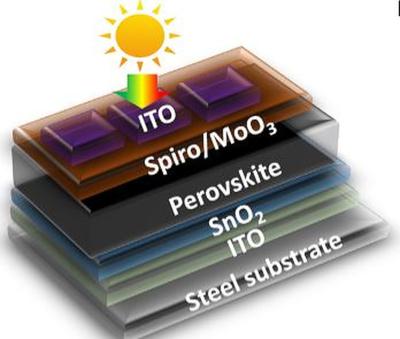Researchers evaluate the design and performance of a lead-free Cs2TiX6-based heterostructure perovskite solar cell
Researchers from Southeast University in Bangaladesh and U.S-based Rochester Institute of Technology have examined the performance of a lead-free Cs2TiX6-based n–i–p type heterostructure perovskite solar cell design, performed using a one-dimensional device simulator, also known as the SCAPS-1D.
The design makes use of Cs2TiCl6 as an n-type front absorber, Cs2TiI6 as an I (intrinsic)-layer absorber and Cs2TiBr6 as a p-type absorber. NiO (p) and ZnO (n) are utilized as the hole transport material and electron transport material. The fluorine-doped tin oxide (FTO) acts as a front contact, conductive oxide, while Pt (platinum) is used as the back contact.









